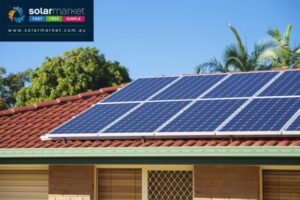The simple answer is yes, you can. Would we recommend it? In most cases, no.
If you know you’re going to want to expand your system later, it’s much better if you can just get that expansion with the initial installation.
Why? Because installing the full system from the get go saves money and potential problems.
Let us take the example of a 4 kW inverter with an initial installation of 1.5 kW of panels.
Initial Installation
Problem #1
The 4 kW inverter will draw the same amount of power regardless of the size of PV array it’s connected to; therefore you are operating your system at a lower efficiency.
Problem #2
Your inverter has an expected life of 15 years. If the inverter is only running a 1.5 kW array for say, the first 3 years then that’s 20% of its life gone. That’s 20% of its life where it has 2.5 kW of unused capacity that you’ve paid for but is giving you no return.
Expansion 3 years later
In this example, 3 years have gone by and the system is now being expanded to 4 kW’s of panels.
Problem #3
You now have to pay for a second installation. Not only is this a second call out fee but there is additional time required for the installation crew to inspect the previous work done. So you’re out of pocket already by having to pay for two installations versus just the one.
If you have a spare MPPT (input) to the inverter and can fit all the new capacity on the second input then Problems #4 and #5 can be ignored. However, if any of the new panels have to be linked to the old panels, then these two items do apply.
Problem #4
Three years down the line, the panels that you have connected to your system are no longer available. The same brand may be about but they have a new model with slightly different specifications. Worse still, the same brand is no longer available and you have to just find the closest match.
This creates, what are called, mismatch losses. This means that the PV array is compromised and loses efficiency because the panels do not behave in the same way and the inverter has to compromise between the two types of panel. The result is less than optimal power output which means less return on your system.
Problem #5
This is similar to problem #4. Even in the case that the exact same model panels are available and installed, the panels you’ve had up have been operating for 3 years and have experienced some degradation. The way a solar system works is that panels linked together will be limited by the weakest element in the chain. So your brand new panels can only perform as well as the degraded panels which means you’ve lost the benefit of whatever the difference in power output is between your old and new panel x3 years.
Summary
If you’ve already got a well designed system in place e.g. a 4 kW inverter with 4 kW of PV panels and decide that you want to increase your output by going to 4.7 kW of PV panels then by all means go ahead.
However, if you want to get an array far smaller than your inverter capacity with the intent of filling out the rest of the capacity later, either go for the full capacity you want now or settle for a smaller inverter. Filling out the capacity later on loses you a lot of financial benefit, compared to if you simply installed the full system from the beginning.









